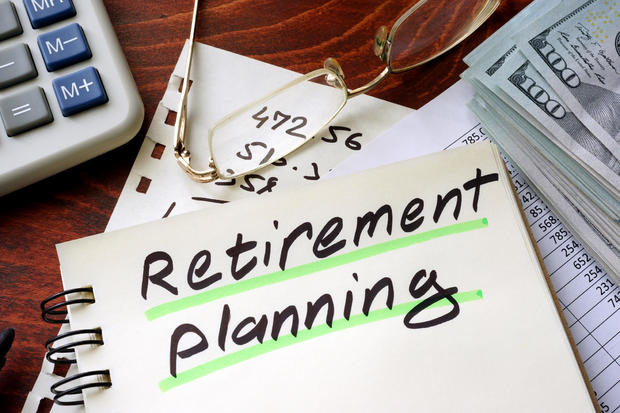7 key retirement trends for 2017 and beyond
Retirement sure isn't what it used to be. Demographic trends and economic uncertainties are making the current definition obsolete for the next generation of "retirees."
But people often form expectations for their retirement based on the experience of their parents or older relatives and friends. As a result, it's important to keep abreast of trends that might affect retirement for the next few decades.
To gain different perspectives, I consulted with four retirement experts to hear their views as well: Debra Whitman, chief public policy officer at AARP; Catherine Collinson, president of Transamerica Center for Retirement Studies (TCRS); Anna Rappaport, past president of the Society of Actuaries (SOA) and current chair of the SOA's Committee on Post-Retirement Needs and Risks; and Robert Powell, editor of Retirement Weekly.
One thing is clear from their input: Many important retirement trends are emerging, and new products and strategies continue to be introduced. Read on to learn about seven key retirement trends for 2017 and beyond.
The rebound marches on
The Great Recession and its aftermath created a perfect storm that battered the retirement plans of millions of older workers. Dramatically lower interest rates reduced interest income on savings and bonds, and significantly boosted annuity prices. To make matters worse, the stock market crashed and real estate values plummeted, causing many older workers to delay their retirements.
But what came down can go up as well!
Indeed, the stock market has since rebounded to new highs, and in many areas of the country, real estate has recovered as well. With luck, the economy will continue to recover, continuing the stock market run-up and providing boosts to real estate markets that have lagged.
Interest rates are also starting to inch up after years of hugging the bottom. If those increases can continue without giving up recent gains in the stock and real estate markets, much of the damage caused by the recession might finally get undone.
This could mean annuity prices might fall, retirees might be able to live on interest from savings accounts and bonds, and retirement might become affordable for older workers who are waiting for the economy to improve enough so they can retire.
In light of these developments, older workers would do well to create a strategy for generating retirement income from their savings and track how much retirement income they might expect if these trends continue.
Social insecurity
The countdown to 2034 is ticking away. Unless Congress enacts reforms, the Social Security trust fund is expected to be depleted by that year, at which time, it would be able to pay just 79 percent of its promised benefits.
Millions of Americas rely on Social Security as a guaranteed form of income to last throughout their retirement years. According to the Transamerica Center for Retirement Studies' 2016 survey of workers, 77 percent of employees are concerned that Social Security won't be there for them when they're ready to retire. Almost half cited reductions or the disappearance of Social Security benefits among their greatest retirement fears.
Addressing Social Security's funding deficit is one of the most far-reaching challenges facing policymakers today. It inherently involves the possibility of controversial and complicated trade-offs such as raising taxes, reducing benefits and increasing the retirement age. This is particularly daunting, given the lack of meaningful employment opportunities for older workers.
Even more challenging is how to solve the problem fairly and equitably across generations and levels of need, and in a way that mitigates the risk of poverty among the elderly.
Social Security reform is sure to be a hot topic in the years ahead as lawmakers try to solve these tough problems. On the campaign trail, Donald Trump promised not to touch Social Security benefits. But in December 2016, the GOP proposed changes that would eliminate the system's funding deficit entirely by cutting benefits and raising the retirement age.
For an example of a more reasonable package, earlier in 2016 the Bipartisan Policy Center proposed a package that combined benefit reductions and tax increases.
"It is critical that policymakers address this issue sooner than later," said Collinson of TCRS. "Procrastinating and kicking the can down the road will only make the problem more painful to solve and with less time for workers to adjust their retirement plans and expectations accordingly."
Older workers will want to follow the debate carefully, provide their input to lawmakers and adjust their plans if their benefits are cut or the retirement age is increased.
Working overtime -- or forever
The trend toward continuing to work as we age has skyrocketed in the past 30 years. The number of people age 65-plus working full- or part-time has risen from just under 11 percent in 1985 nearly 19 percent in 2015. As the labor market tightens due to falling unemployment and a smaller overall workforce, it means demand for talent will increase. And more people are expecting to work into older ages.
According to AARP's Whitman, "In survey after survey, we find that over two-thirds of people plan to work in retirement."
Also look for baby boomers to rewrite the rules about working in their retirement years. Gone is the so-called "gold watch" retirement that marks the abrupt end to a working career with an office celebration -- and the beginning of a life of full-time leisure. Unlike previous generations, boomers envision a retirement in which work and play aren't mutually exclusive.
According to findings from Transamerica Center for Retirement Studies' 2016 survey of workers, two-thirds of baby boomer workers plan to work past age 65, including some who don't plan to retire at all. Many are envisioning a transition that may involve flexible work arrangements, shifting from full-time to part-time or working in a role that's less demanding (39 percent). Some want to continue working until it's no longer possible (25 percent). Only 26 percent plan to stop working when they reach a certain age or savings goal.
Boomers' vision of continued work in retirement can help bring income and benefits as well as an opportunity to stay active and involved. "However, their vision may be easier said than done," according to Collinson. "Few boomers say their employers have business practices in place to support transitioning into retirement."
The SOA's Anna Rappaport also predicted that more people will retire later, particularly as the shift from traditional pension benefits to self-funded savings removes incentives to retire early. "But I see a big challenge," she said, "for many people who want to work longer due to employers' preferences for hiring younger people."
As a result, older workers will want to take steps to increase their employment potential. The TCRS study identifies critical actions that can help you do that, such as remaining healthy, continuing to perform well at your current job and keeping your job skills and contacts up to date.
New ways to save
More than half of all workers, about 55 million, aren't covered by a retirement savings or pension program through their employer. "When an employee has that access, they are 15 times more likely to save than if they are left on their own," according to AARP's Whitman.
To date, seven states have passed laws that will allow workers in that situation to access state-based savings programs, and another 20 states are at some stage of considering such a plan. This will enable millions more Americans to have something set aside when they retire to supplement Social Security.
According to a policy fact sheet prepared by AARP, particularly vulnerable Americans are workers at small employers, workers with less than a college education, lower-wage earners and minorities.
If you don't have a retirement plan at work, you'll want to watch the development on state-run retirement plans. Since it might be a few years before such a plan is established in your state, until then, you might do well to start saving in a myRA account, which the U.S. Treasury recently approved.
Unbiased help wanted
After a major battle that lasted several years, the U.S. Department of Labor issued new fiduciary rules in 2016 that substantially expand requirements for advisers to act in their clients' best interests in connection with retirement advice.
Keep your eyes on these rules, though: They may be tested in the courts, and Congress may seek to overturn them after the Trump administration takes over.
According to the SOA's Rappaport, "There are a variety of different types of professionals who provide financial and other advice in connection with retirement. Some sell products, and some do not. Some are subject to fiduciary requirements, and some are not. Some are paid by commissions, some by fees linked to assets under management and some by other methods. There have been concerns about conflicts of interest, and there is evidence of such conflicts influencing the advice provided."
AARP's Whitman is optimistic that "the fiduciary rule will help ensure that billions of dollars in hidden fees and commissions will remain in people's accounts. New online platforms that use 'robo advice' will also help provide low-cost accounts to more and more individuals."
Retirement Weekly editor Powell is also optimistic that the fiduciary rule -- regardless of whether Congress allows it to go into effect -- will set in motion the delivery of better personal financial advice as people demand to work with a fiduciary.
No matter what the new rules' fate, more attention will focus on expenses paid to financial institutions and advisers, how advisers are paid and how they can provide value to workers preparing for retirement. Some financial institutions and advisers will be glad to act as your fiduciary and deliver good value. Your job is to find them.
Home sweet home
The SOA's Rappaport believes housing for retirees will get a lot more attention in the next five years. The majority of older Americans own their own homes, and many still have mortgages. For many families, the value of their nonfinancial assets, primarily their house, exceeds their financial assets.
In fact, some families have virtually no financial assets. But most people prefer to stay in their homes and try to hold on to them rather than sell and use the money for retirement. Although reverse mortgages are available, they haven't been widely used, but that may change as interest in them increases.
Given that home equity may be a significant asset for many older workers and retirees, in the years to come, a lot of energy will go into strategies that deploy home equity. Possibilities include:
- Taking a reverse mortgage that pays a monthly payment for life, similar to an annuity.
- Using a reverse mortgage to retire other debt, such as an existing conventional mortgage, to reduce your monthly living expenses.
- Selling your home and downsizing to a less expensive residence.
- Paying off your mortgage to enjoy living rent-free in your home.
- Renting a room or two for extra income.
- Reserving home equity as a resource you can tap in the future if you have high long-term care costs.
If you have substantial home equity, you'll want to pay close attention to products and strategies that may emerge over the next few years to see if they might help secure your retirement.
I, robot
Robert Powell predicts an increasing use of software-based "robo advisors" and artificial intelligence (AI) to decrease financial institutions' costs and to improve decision-making. Possible applications include when to claim Social Security, how to create tax-efficient retirement income, fraud detection and where to live in retirement.
A recent survey by tech firm Narrative Science shows that roughly one-third of financial institutions are already using AI technologies, such as predictive analytics, recommendation engines and voice recognition and response.
For instance, some firms might program their AI applications to demonstrate that they're acting in the best interests of their clients to help the firms comply with the new fiduciary rules. After all, you don't need to pay commissions to a robot, and they're always ready to help, 24/7.
In coming years, any number of changes could affect the type of retirement you experience. So it would be wise to keep track of these and other related trends and developments -- and plan for possible changes. The key is to be ready for retirement no matter what it looks like.













